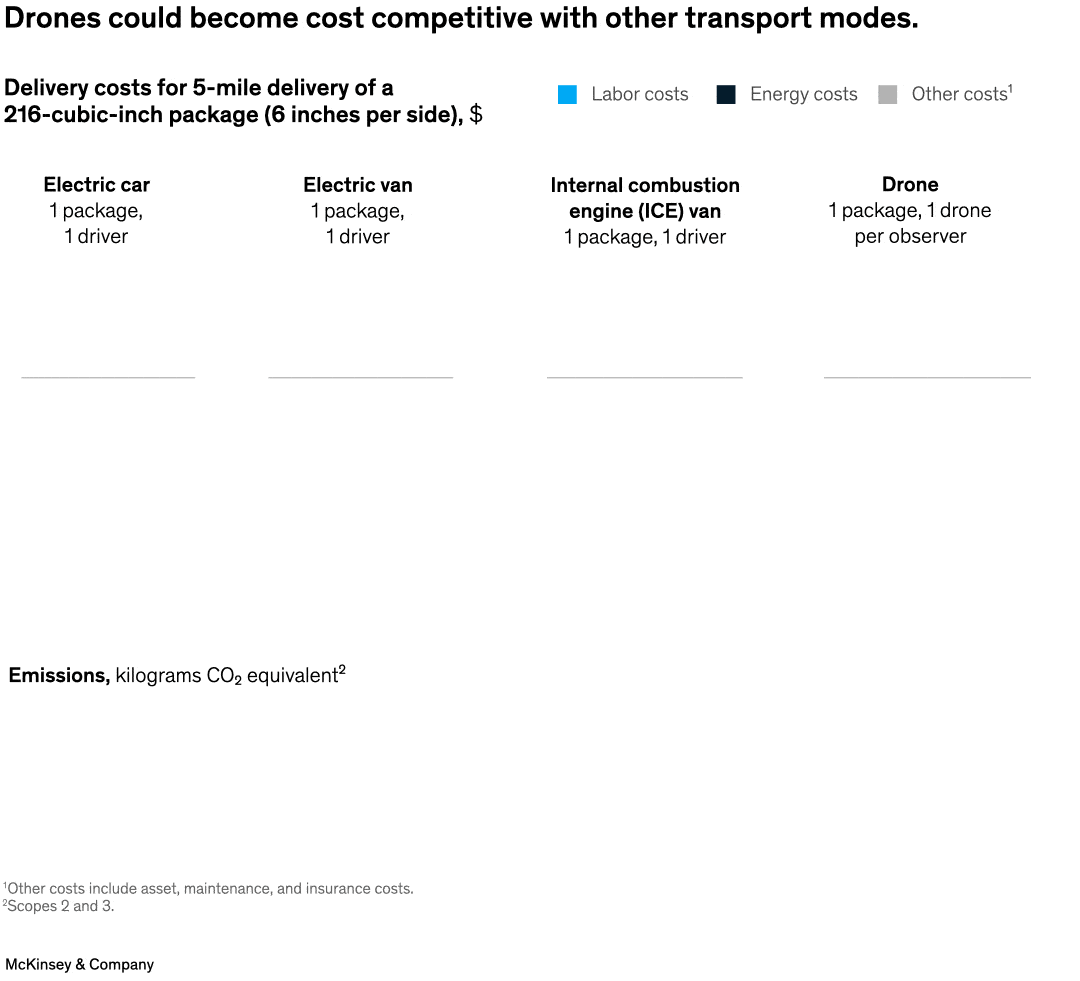Are delivery drones set to take off? Under certain conditions—when pooling deliveries doesn’t make practical sense, for example—drones may already be the most cost-effective mode of delivery, say partner Robin Riedel and coauthors. They are also environmentally friendly, with CO2 emissions typically lower than those of electric cars and vans making a single delivery, and significantly lower than those of gasoline-powered vehicles.

Image description:
This square pie chart shows the comparative costs of delivery methods for a 6-inch cube parcel within 5 miles, and the various shares of those costs that fall into labor, energy, or others (such as asset, maintenance, and insurance). The image animates onto the screen. The 4 delivery methods being compared are a drone, an electric car, an electric van, and an internal combustion engine van. None of the vehicle types are automated, as each would require an operator. The drone is indicated as the most expensive in an overall cost comparison. The bottom portion of the chart displays volume circles, identifying the CO2 emissions output for each delivery method. In this comparison, the drone has, by far, the lowest emissions.
Footnote 1: Other costs include asset, maintenance, and insurance costs.
Footnote 2: Scopes 2 and 3.
End of image description
To read the article, see “Drones take to the sky, potentially disrupting last-mile delivery,” January 3, 2023.